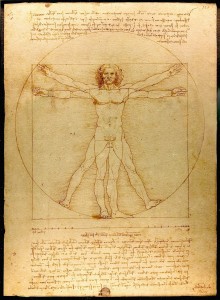
What can be called Fibonacci spirals are found everywhere in nature. From sunflowers and pine cones to pineapples, they are prevalent. Interestingly, the math of the Fibonacci numbers is sometimes known as the Golden Section of Geometry. The “golden angle” is quite close to 137.5°.
Determining the Angle
How can this number determined? It can be determined by taking two consecutive Fibonacci numbers. First, divide the larger by the smaller. Then multiply that times 360°. You arrive at about 222.5°. Subtract 222.5° from 360°. What do you get? 137.5°. The precise number may be achieved by taking the “limit” of the ratio of two consecutive Fibonacci numbers as those numbers approach infinity. That is, the limit, of
Fn ÷ Fn-1 as n → ∞ = 137.5°
In other words, as n gets greater and greater and approaches infinity, the corresponding Fibonacci number (ever larger and larger) when divided by its preceding Fibonacci number, approaches (ever closer and closer) 137.5°.
Fibonacci Numbers: The Golden Angle
This angle is labeled the “golden angle.” It is also called “phi.” The golden section of geometry, which includes this angle, is also found in works of art. This is because rectangles and other objects that relate to the Fibonacci sequence are said to possess the most aesthetically pleasing of proportions.
Some view all of this as related to evolution, whereas others feel it offers definite evidence of design and the existence of a Creator. Frankly, I am inclined toward the latter. Whatever you may believe, clearly the Fibonacci numbers are significant to the mathematician, the artist, and the scientist.
Note: You might also enjoy Buttercups Glow at Night
References:
